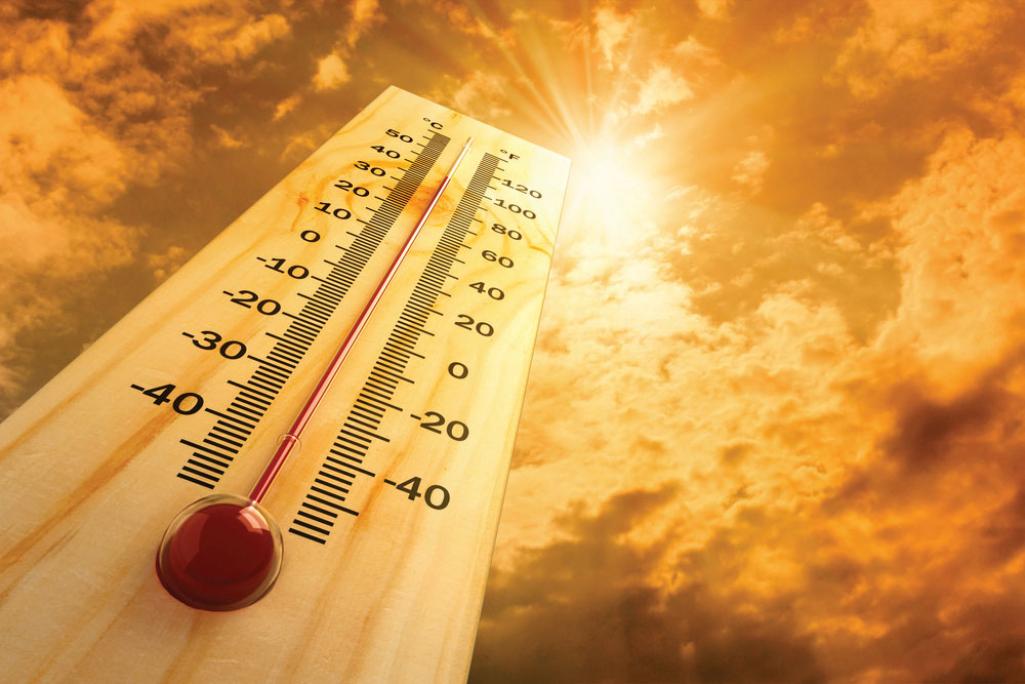States across the nation are HOT, HOT, HOT! In addition to the weather (obviously!) surface material has a lot to do with temperature fluctuations. Just as you can sense a drastic temperature differentiation between standing on a blacktop parking lot and standing in the grass, you can also drastically notice a temperature increase on a commercial rooftop between different materials. The key here is to control the heat absorption in your commercial rooftop.
Dark-colored roofing systems typically absorb light — up to 90% of solar energy — and convert it to heat, emitting it back into the atmosphere. White-colored roofing systems typically absorb  much less light by reflecting the light without transferring it into heat. Our commercial roofing contractors in Georgia and elsewhere across the nation want you to know that these rooftop temperatures can severely affect the interior temperatures of your building as well. When your rooftop warms up, heat can be absorbed by your roof and funneled into the interior. This is an especially prevalent issue in older buildings that weren’t installed with R20 and R30 insulation. With that, newer insulations, strategically-selected materials, and various coatings can help to reduce heat radiation enough to size your AC requirements differently. These factors can easily help in reducing a building’s energy costs and the demands on the power grid that contribute to energy pricing from the utility company. With the most efficient materials, you can significantly reflect the sun’s energy back into the atmosphere (solar reflectance).
much less light by reflecting the light without transferring it into heat. Our commercial roofing contractors in Georgia and elsewhere across the nation want you to know that these rooftop temperatures can severely affect the interior temperatures of your building as well. When your rooftop warms up, heat can be absorbed by your roof and funneled into the interior. This is an especially prevalent issue in older buildings that weren’t installed with R20 and R30 insulation. With that, newer insulations, strategically-selected materials, and various coatings can help to reduce heat radiation enough to size your AC requirements differently. These factors can easily help in reducing a building’s energy costs and the demands on the power grid that contribute to energy pricing from the utility company. With the most efficient materials, you can significantly reflect the sun’s energy back into the atmosphere (solar reflectance).
Let’s talk color. It goes without saying that black rooftops are the hottest. Although most of them are designed to last 20+ years, these rooftops can suffer more quickly because intense heat speeds up the breakdown of materials. In fact, in warmer climates, wear and tear resulting from continuous heat exposure is a main issue from a longevity standpoint. On the other hand, white rooftops can sometimes be a full 50 degrees cooler than their black counterparts and can be a full 30 degrees cooler than gravel roofs. Coated roofs can also be much cooler than black roofs.
Essentially, you should know that you can control how hot your rooftop gets in the summer and how much hear is absorbed into your building to a certain extent and selecting efficient roofing materials is the best way to do it. This is something you’ll seriously want to consider when replacing your commercial rooftop. Not sure where to start? Give the commercial roofing experts at CP Rankin a call and we can walk you through all of your options. With knowledgeable rooftop professionals stationed throughout the US, we’re experienced in weather of all regions and can customize a rooftop plan to best meet your budget and design a rooftop that aligns with the long-range goals of your building. Call today! 866-ROOF-322

